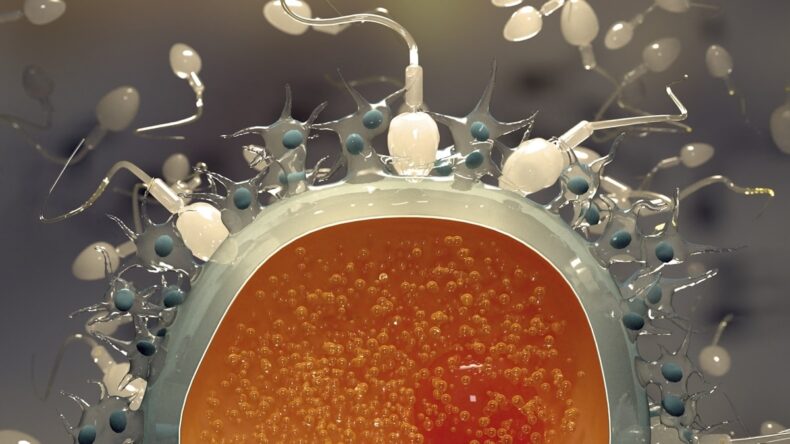Experts believe that the discovery of a protein that is crucial to sperm-egg fusion may provide a one-stop solution for the diagnosis and treatment of infertility. It was given the name MAIA after the Greek goddess of maternity and additional study could lead to the creation of more effective contraceptives.
The development of cell cultures for the “synthesis” of human oocyte proteins is also highlighted in the study, which was carried out by an international team under the direction of Katerina Komrsková from the Institute of Biotechnology of the Czech Academy of Sciences.
Artificial eggs were made using thousands of beads by the international research team, led by the University of Sheffield, for the first study of its sort. So that sperm could attach to them, each of these beads carried a unique peptide—a type of protein—on its surface.
After incubating sperm with the beads, researchers found that very few of the beads had sperm attached to them. After several laborious rounds of removing any beads that did not have sperm bound to them, researchers eventually had beads that corresponded to one particular protein, MAIA, and sperm linked to all of these beads.
After inserting the gene corresponding to MAIA into human culture cells, these became precisely responsive to sperm throughout the natural fertilization process.
The results, which were reported in Science Advances, show that during the procedure, MAIA is in charge of luring sperm into the egg for fertilization.
Professor Harry Moore, the study’s principal investigator, from the School of Biosciences at the University of Sheffield said: “Ethics concerns and the scarcity of eggs for research have severely limited our understanding of human fertility. Infertility affects more than half of people who have difficulty getting pregnant naturally.”
“In addition to helping researchers better understand the processes underlying human reproduction, the innovative artificial insemination method that allowed us to identify the MAIA protein will also revolutionize the development of future contraceptive methods and pave the way for novel treatments for infertility.
The results might support the hypothesis that certain sperm and some eggs may not be compatible. Now, scientists want to find out if sperm from various individuals bind to the protein in various ways.
According to Professor Allan Pacey, co-author of the study and Head of the Departments of Oncology and Metabolism and Infection, Immunity, and Cardiovascular Disease at the University of Sheffield, the discovery of the MAIA protein represents a significant advancement in our understanding of the procedure of human fertilization.
Without the use of synthetic beads to mimic the surface of human eggs, it would have been nearly impossible to learn because we couldn’t have conducted the experiment without them. An example of how to think creatively
Read Next: https://tdznkwjt9mxt6p1p8657.cleaver.live/dark-matter-may-not-exist-in-newest-theories/













